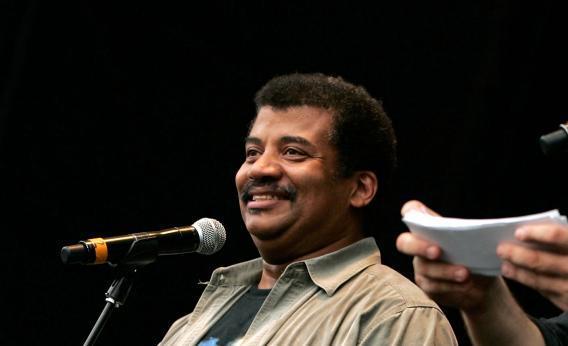Last week Neil deGrasse Tyson taught us “The Most Astounding Fact,” and this week he wants us to keep dreaming. That’s what he’s talking about in a new video just uploaded to YouTube and embedded below, making the case that by defunding NASA we’ve defunded our own national imagination.
Here, as ever, deGrasse Tyson blends inarguable facts with arguable optimism. And just as with the last video, some powerful imagery and swelling music—courtesy of YouTube user Scrunchthethird—underline his points (the group that composed the music is, once again, The Cinematic Orchestra). The crux of his argument is that NASA is not only a means for developing new technologies and making new discoveries, but that it rallies our country around science and hopes for tomorrow. By losing faith in NASA, and the “four tenths of one penny on a tax dollar” it represents, we’ve “remov[ed] the only thing that gives people something to dream about tomorrow.”
Tyson, even despite his immense charm, is not without his opponents in this debate. Katherine Mangu-Ward, who is managing editor of the libertarian magazine Reason, responded to Tyson’s argument at The Atlantic:
The space program has been a laughable mess for years now, sending elderly (and occasionally combustible) space buses back and forth to an increasingly pointless space station carrying “ant farms, recycled-urine-based finger paints, and other science fair experiments.” And now NASA can’t even do that.
The video seems to argue that the end of our national enthusiasm for NASA coincided with relaxing tensions in the Cold War. This may be true, but, as Mangu-Ward suggests, and as Radiolab suggested in its exploration of the subject in 2007, NASA’s fall from popularity was also due in part to the explosion of the Challenger space shuttle in 1986. (For those that didn’t experience that event firsthand, chilling new amateur footage has just surfaced; I should warn that the video is very hard to watch.) Certainly there are more complications in the debate than the video addresses.
Of course, Radiolab faces many of the same criticisms that Tyson and these videos might: They use dramatic music, some dazzling editing, and a healthy dose of romanticism to appeal to the heart as well as the mind. But if these videos increase interest in science, that’s not a bad thing. So long as we remember that the video’s persuasiveness has to do with the swelling music as well as the actual argument. (By the time Tyson asked “How much would you pay for the universe?” I was ready to hand over a few bucks—and maybe a few of yours, too.) Some viewers found the music in the video above to be so intrusive, in fact, that the makers edited together a second version, with a more muted soundtrack.
If you want to hear Tyson’s arguments without those enhancements, you can watch him make many of these comments on Bill Maher, or in print. On the other hand, the power of those images is part of Tyson’s point.
Previously:
Did You See This? Neil DeGrasse Tyson Blows Your Mind
